
Others that grow in the wild, but whose leaves are eaten, are: wild chicory, wild radicchio, grugni, dandelion, etc.
Of the VI-VII fundamental group of foods, bruscandoli are low-calorie, rich in fiber and water, and probably contain useful levels of potassium, vitamin C (ascorbic acid) and equivalent retinol (provitamin A, probably carotenoids). The content of phytochemicals with antioxidant power such as flavonoids and tannins is undoubtedly appreciable.
The bruscandoli have no dietary contraindications, except for any hypersensitivity of an allergic nature. They have a "high digestibility and lend themselves to the nutritional regimen of: healthy, overweight and even those suffering from metabolic diseases. It cannot be excluded that they contain anti-nutritional substances such as phytates and oxalates; fortunately, most of these would still be inactivated with cooking. .
The bruscandoli are available only in spring. They are normally cooked after boiling, in boiling water or steam, and eaten hot or cold, plain or soberly seasoned. They can be an ingredient for more complex recipes such as, for example, risotto with bruscandoli and bruscandoli omelette. It is advisable to avoid picking them where they can come into contact with crop pesticides or with excessive environmental pollution - for example on the roadside.
The name "bruscandolo" derives from its organoleptic and taste characteristics. Containing bittering molecules, the same ones that give the typical taste to beer, in the dialect language - low Veneto and high Emilia - they are defined as "a little" bruschi ", hence" bruscarlo ".
Did you know that ...
From the etymological point of view, it is no coincidence that, in the same areas, many call the shoots of the butcher's broom simply "bruschi" or "brusc" - even more bitter than bruscandoli.
The harvesting of the bruscandoli should be done with the first temperature rises, in spring, taking care to take only the terminal 20 cm of each stem. Totally developed ones should be avoided because they have a woody consistency - despite the more intense flavor. The latter are recognizable by the more intense color, the rigid consistency, the superficial hair and the more developed leaves.
From the botanical point of view, the bruscandoli are nothing more than the tender growth protuberances of the thin climbing stems - improperly defined as buds - of the wild hops, a climbing herbaceous plant of the botanical family Cannabaceae, Genus Humulus, species lupulus and variety lupulus. In Italy it grows spontaneously - but can be cultivated - mainly in the north, near water courses, in the shade or with partial exposure, up to a maximum altitude of 1200 m; the preferred climate is temperate - not too windy - and requires fairly fertile soil.
rich in vitamin A - which in VII - fruits and vegetables rich in vitamin C - fundamental group of foods.They should have a very low calorie intake, between 15-20 kcal / g. Energy is mainly supplied by soluble carbohydrates, followed by negligible quantities of proteins with low biological value and tendentially unsaturated fatty acids.
The fibers are hypothetically abundant, with a good percentage of the soluble type. The bruscandoli are cholesterol-free and rich in phytosterols, which tend to have an opposite metabolic effect. They do not contain the molecules mainly responsible for scientifically diagnosable food intolerances, such as gluten, lactose and histamine. They should also be low in phenylalanine amino acids and purines. It cannot be excluded that they bring certain anti-nutritional agents, mainly consisting of phytic and oxalic acid and their derivatives (phytates and oxalates), which however decrease significantly after cooking.
As for vitamins, bruscandoli probably contain excellent concentrations of equivalent retinol (RAE - provitamin A), mainly consisting of carotenoids, and considerable levels of ascorbic acid (vitamin C). It is possible that the level of vitamin K, vitamin E (alpha tocopherol) and folic acid - water-soluble of group B is also good.
With regard to mineral salts, it is logical to deduce that above all the potassium levels are appreciable; if it were to be in line with other foods of the same kind, the concentrations of calcium, iron - not very bioavailable - magnesium, manganese and phosphorus could be relevant. However, it must be specified that, raw, part of these can remain chelated in the aforementioned anti-nutritional agents. Furthermore, all the water-soluble compounds tend to dilute in cooking by poaching - for this, it would be advisable to cook the bruscandoli with steam.
There is a fair concentration of antioxidant phytotherapeutic molecules of non-vitamin origin, such as flavonoids and tannins - also the latter, with a slight anti-nutritional function on the digestion of proteins.
, are suitable for all diets of healthy people.
Low in sugar and energy, they have no contraindications for overweight, type 2 diabetes mellitus and hypertriglyceridemia. In normal portions, they are harmless even for those suffering from gastric diseases. The dietary fibers contained in them perform numerous beneficial functions for the body. . Especially the soluble ones - such as inulin - correctly associated with water, can:
- Increase the gastric mechanical stimulus of satiety
- Modulate nutritional absorption - reducing the insulin glycemic surge and hindering the absorption-reabsorption of cholesterol and bile salts
- Preventing or treating constipation / constipation.
This last aspect, essential for the health of the intestine, contributes to considerably reducing the chances of colon cancerogenesis, but also of many other discomforts such as: hemorrhoids, anal fissures and anal prolapse, diverticulosis and diverticulitis, etc. It should also be remembered that soluble fibers constitute a nutritional substrate for the intestinal bacterial flora; maintaining the trophism of the microbiota, whose metabolism releases nutritional factors important for the mucosa, further promotes the health of the large intestine.
Provitamins A, vitamin C, vitamin E, flavonoids and tannins have an important antioxidant role. In addition to counteracting the action of free radicals - culprits of cellular aging - these nutritional elements are considered useful in the treatment of various dysmetabolisms - including dyslipidemias. Vitamin K, on the other hand, is an essential anti-bleeding factor. Folate is necessary for the constitution of nucleic acids, a very important process during gestation.
The richness of water, potassium and magnesium helps to improve the body's hydro-saline balance - which becomes precarious especially when sweating increases, for example in the case of intense and prolonged sport - and supports the pharmacological treatment of hypertension. arterial water. Water and minerals are two nutritional factors often lacking even in old age. Manganese, on the other hand, has important functions as a metallo-enzymatic constituent and enzymatic activation. Calcium and phosphorus, which the body has a rather high requirement , are necessary constituents for bone hydroxyapatite and also perform numerous other functions; however, bruscandoli cannot be considered a primary nutritional source of calcium.
Bruscandoli have no contraindications for: celiac disease, lactose intolerance, histamine intolerance, phenylketonuria and hyperuricemia. In case of pregnancy, regardless of tastes and gastronomic value, it is not advisable to eat raw bruscandoli. subjects with a tendency to kidney stones - in particular, kidney lithiasis with calcium oxalate stones - not to exceed the portion and frequency of consumption of bruscandoli, and to eat them exclusively cooked.
It is advisable to avoid crops grown inside cultivated land - for example in orchards - or on the roadside, due to the potential retention of pesticides and pollutants.
It is free of limitations in the vegetarian and vegan diet - even raw food - the same applies to philosophies and / or religions of all kinds. The average portion of bruscandoli is 100-200 g (about 15-35 kcal).
, useless and harmful. Some people like them sautéed, but if the sticks are not really "very young", they tend to remain woody on the outside.Bruscandoli make an excellent side dish. They can be eaten hot or cold, in salads. The condiment, which is absolutely optional, generally consists of a drizzle of oil or a knob of melted butter and very little ground black pepper; if necessary, a splash of lemon juice or apple vinegar may be appreciated. To avoid grated cheese , which would cover the flavor.
There are also some more elaborate recipes that contain bruscandoli, both raw and boiled. The most famous is probably the risotto ai bruscandoli. Here the stems are washed and browned separately with a little white onion before the rice; then they are removed and, in the same casserole dish, the cooking of a very normal risotto - Carnaroli variety is started. After blending with white wine, concurrently with the addition of vegetable broth, it is possible to add the bruscandoli and finish cooking.
The second best known is the omelette, or omelette, with boiled bruscandoli. There are no warnings to follow, if not to add them already fully cooked.

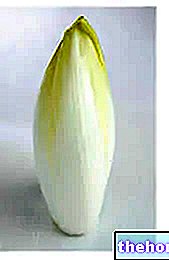

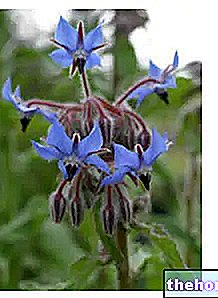
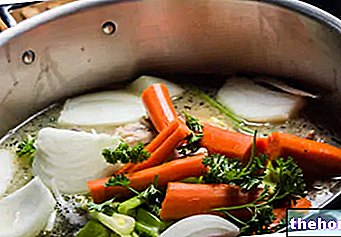
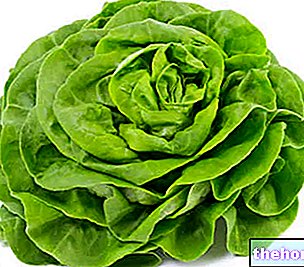
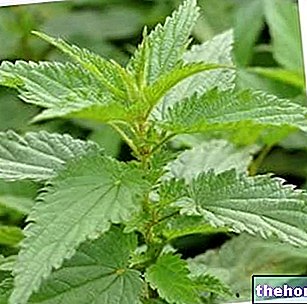












-nelle-carni-di-maiale.jpg)








